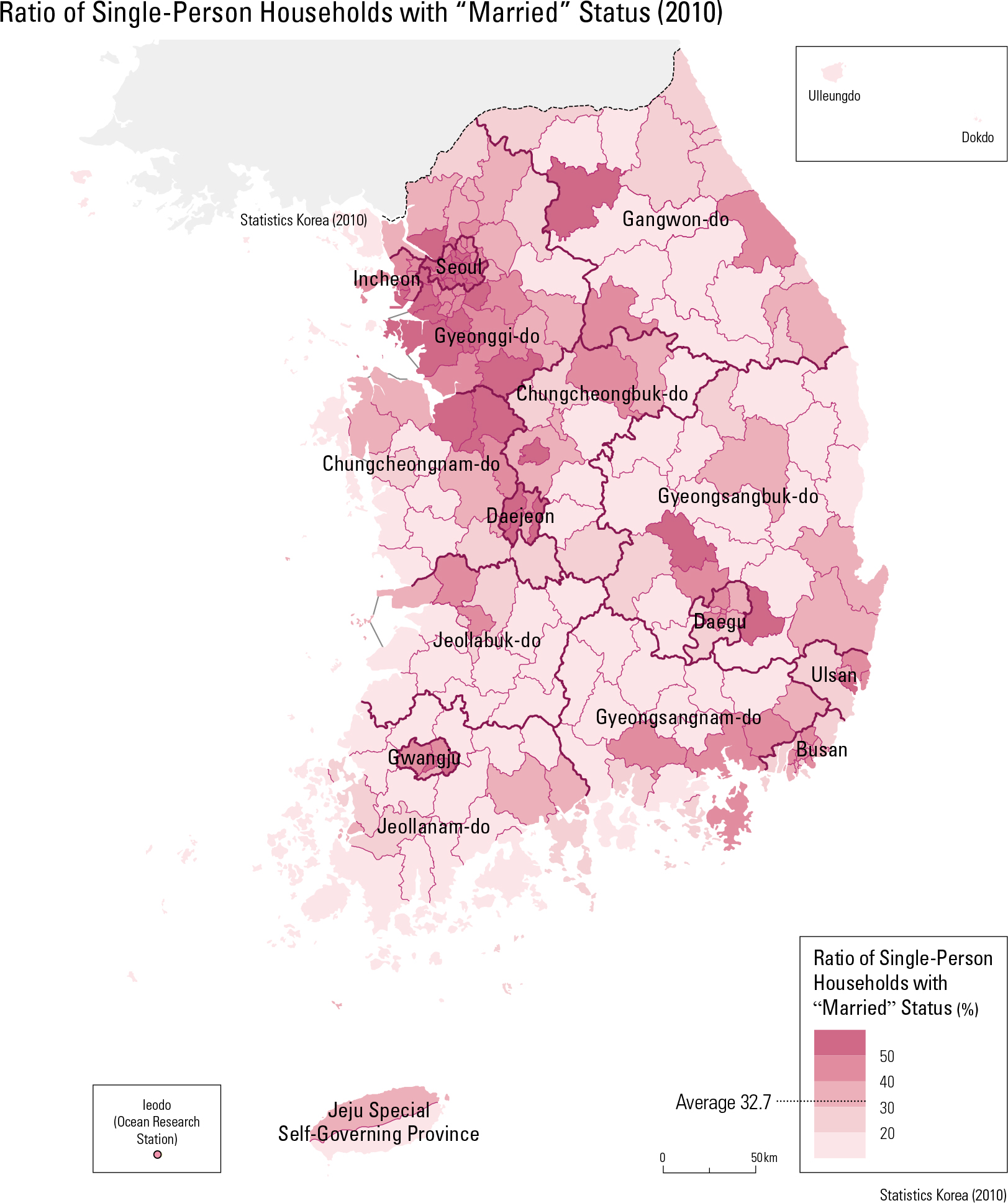English III
In 2010, the number of single-person house- holds reached 4.14 million in Korea, or about 24% of all general households. The female sin- gle-person households outnumbered the male sin- gle-person households by a ratio of 2.22 million to 1.92 million. The sex ratio of single-person households is 77. The ratio is very low in rural areas. The ratio of single-person households in the “married” status category is 32.7%. National- ly, about 27.9% of single-person households had “college or above education.” Nationally, about 29.3% of single-person house- holds live in monthly rental housing. The distri- bution of monthly rental households is similar to the distributions of single-person households in “unmarried” or “college or above education” cat- egories. The ratio is low in rural areas, while high in the metropolitan and industrial areas. Many factors affect the geographic distribution of single-person households such as marriage, school, and work. The probability of becoming a single-person household dramatically increases for both men and women after the age of 18 be- cause of leaving home for school or work. The male single-person households decrease as many men get married in their late 20s. The number of female single-person households does not decrease like the male number due to various reasons such as choosing to remain unmarried, a male spouse passing away, or divorce. Regionally, the ratio of unmarried single-person households is high in metropolitan and industrial areas due to school or work opportunities, and it is also increasing in rural areas with increasing elderly populations.
page_2 |



